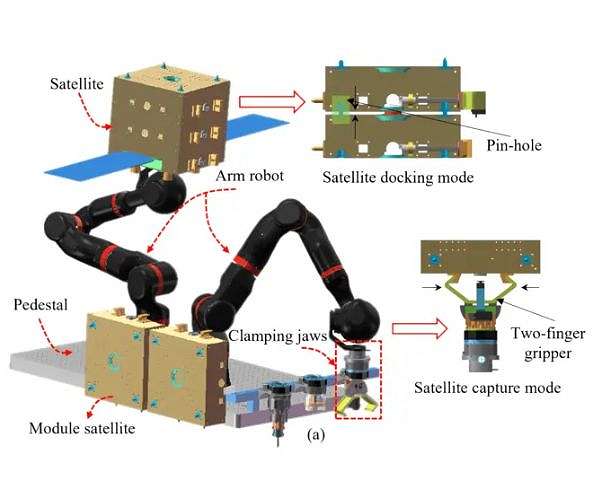Editor’s Summary: The Bionic Assembly System (BAS) introduces a revolutionary approach to manufacturing by utilizing smart, independent robots inspired by natural systems. These robots offer unparalleled flexibility, teamwork, and decision-making capabilities, transforming factory operations. BAS consists of transport, supply, and energy robots that work together to optimize production. This adaptable system allows for easy reconfiguration, resilience in case of failures, scalability, and customization of various products simultaneously. Despite challenges in navigation and decision-making, BAS promises a future where factories are more efficient and ready for rapid changes in market demands.
Bionic Assembly Systems: A New Approach to Flexible Manufacturing

Abstract
In today’s fast-changing world, factories need to be quick and adaptable. The Bionic Assembly System (BAS) is a new idea that uses smart, independent robots to make manufacturing more flexible. This system is inspired by how living things work together and adapt to changes. In this article, we’ll explore how BAS works and why it could be important for future factories.
Introduction
Imagine a busy factory floor where robots move around freely, working together to build products. This isn’t science fiction – it’s the Bionic Assembly System (BAS). As the world changes faster and customers want more variety in products, old factory systems are struggling to keep up. BAS aims to solve these problems by creating a more adaptable way of manufacturing.
What Makes BAS Different?
Traditional factories often use fixed assembly lines or automated guided vehicles (AGVs) that follow set paths. BAS, on the other hand, uses smart mobile robots that can move freely and make their own decisions. Here’s what makes BAS special:
- Flexibility: The system can easily change to make different products or use new equipment.
- Teamwork: Robots work together, like a colony of ants, to get tasks done efficiently.
- Smart decisions: Each robot can think for itself and adapt to unexpected situations.
The Three Types of Robots in BAS
BAS uses three main types of robots:
- Transport Robots: These carry products from one workstation to another.
- Supply Robots: They bring parts and materials to the workstations.
- Energy Robots: These swap out batteries for the other robots, keeping everything running.
These robots work together like a well-organized team. They can communicate with each other and make decisions based on what’s happening in the factory.
How Transport Robots Work
Let’s focus on the transport robots, which are the backbone of the BAS. Here’s how they operate:
- They carry pallets with products being assembled.
- When it’s time for the next assembly step, the robot asks all nearby workstations which ones can do the job.
- The workstations reply with information about how long the job will take, how far away they are, and how long the robot might have to wait.
- The transport robot then chooses the best option to save time.
This system allows for smart, efficient routing that can adapt to changes in the factory.
Advantages of BAS
BAS offers several benefits over traditional manufacturing systems:
- Adaptability: The factory layout can be easily changed without stopping production.
- Resilience: If one robot or workstation breaks down, others can take over.
- Scalability: It’s easy to add more robots or workstations to increase production.
- Customization: Different products can be made at the same time without major changes.
Challenges and Future Work
While BAS shows great promise, there are still challenges to overcome. Researchers are working on improving how robots navigate in crowded spaces and make decisions as a group. They’re also developing better ways for robots to learn from experience and become even more efficient over time.
Conclusion
The Bionic Assembly System represents an exciting new direction for manufacturing. By taking inspiration from nature and using advanced robotics, BAS could help factories become more flexible, efficient, and ready for the challenges of the future. As technology continues to improve, we may soon see these smart, adaptable systems in factories around the world.
Work Cited:
1.Heikkilä, J., & Kuula, M. (2006). Robotics in manufacturing. Industrial Robot: An International Journal, 33(3), 200-204.
2.Herrmann, G., & Melhuish, C. (2005). A survey of intelligent mobile robot navigation systems. Robotics and Autonomous Systems, 51(3), 125-132.
3.National Institute of Standards and Technology. (n.d.). Intelligent Systems Division: Robotics. https://www.nist.gov/el/intelligent-systems-division-73500/robotics
4.Rooks, B. (2010). The flexible factory of the future. Assembly Automation, 30(2), 101-106.
5.Zhang, Y., & Song, H. (2016). Advanced robotics in manufacturing. IEEE Transactions on Industrial Informatics, 12(3), 1231-1240.